We all know that ‘content marketing’ is a bit of a buzzword in the digital sphere, but what exactly is it, how do you do it and how do you become good at it?
At Impression, we’re big fans of the ‘Hero, Hub and Hygiene Content Pyramid’ (below) which explains the different elements that should make up any content marketing strategy.
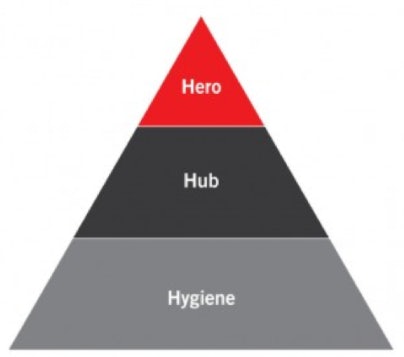
It’s open to interpretation but here’s the way we see it:
- Hygiene is your ‘bread and butter’ content i.e. any on-site copy including blogs (which should be well optimised in order to see the SEO benefits). I personally class infographics as part of this section too, as well as social media posts, which can drive engagement and traffic back to your website.
- Hub content relates to anything which goes beyond your own site, i.e.thought leadership/guest posts, press releases and influencer marketing.
- Hero is where the big content marketing campaigns lie. These are generally very visual and/or interactive pieces that have the capability of going viral – or at least gaining a good amount of traction – and have probably taken a decent chunk of money, time and effort to create (although not all hero campaigns have to be expensive, as I’ll come on to explain later!)
We always recommend that clients go from the ground up – after all a pyramid would crumble if it didn’t have solid foundations, right? This means that all three elements are necessary for any effective digital marketing strategy and that while Hero content may have the most potential, it wouldn’t be anything without the additional support.
What are the elements that make Hero content marketing campaigns successful?
That is, of course, the million-dollar question. But we think we have a pretty good idea based on what has worked for us in the past and what has worked for other agencies/brands.
Let’s look at a few successful content campaigns and then assess the things they have in common:
Sainsbury’s United Kingdom of Cats and Dogs
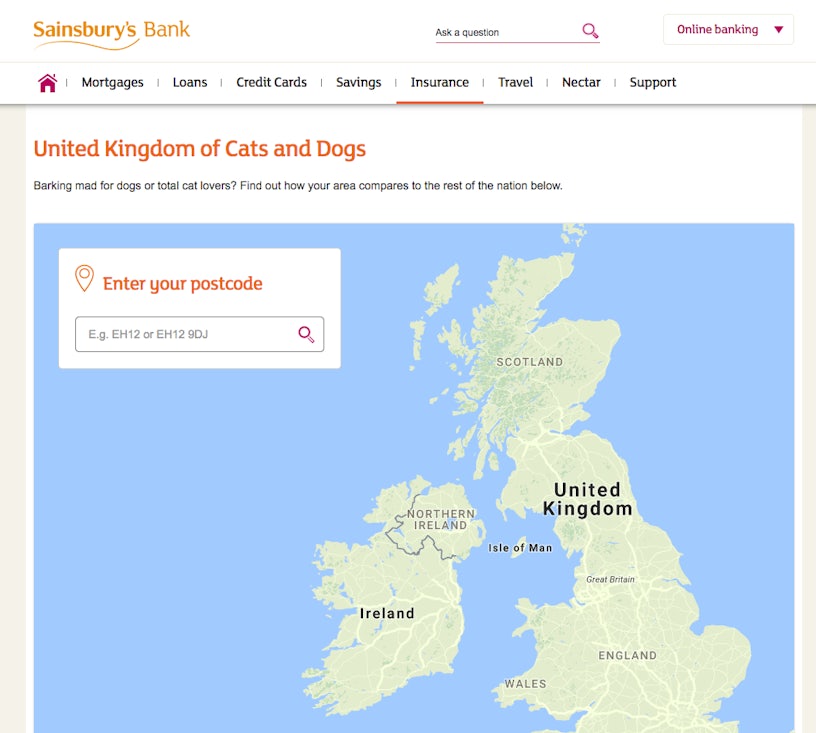
I first came across Sainbury’s United Kingdom of Cats and Dogs campaign while browsing Facebook (I was obviously targeted because I’m a sucker for animals…) It lets you see whether there are more cat or dog owners in your city, the top breeds in your region, and the nation’s favourite pets, including names!
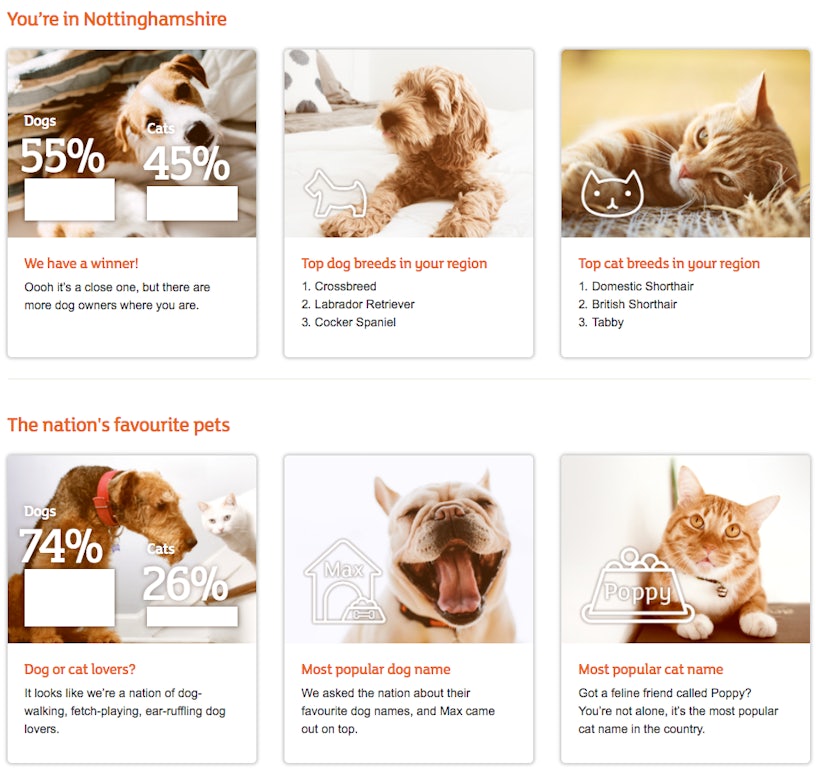
The whole purpose of this campaign was – I assume – to raise awareness and generate more enquiries for Sainsbury’s pet insurance, and what a great way to do it! The tool is relatively new but has so far gained 12 backlinks, mainly among pet publications.
It’s also worth noting that in August the company released a piece of animal-related Hub content which reveals that 59% of dog owners say their pet is their “best friend”, and 17% of dogs and cats have a dedicated presence on social media. This too has gained a decent amount of traction, with results including:
- http://www.nwemail.co.uk/news/barrow/17-of-British-pets-have-dedicated-presence-on-social-media-97e17ed5-6d9b-4484-a022-af8997f0423c-ds
- http://www.bournemouthecho.co.uk/news/15484012.59__of_dog_owners_say_their_pet_is_their____best_friend_____reveals_survey/
- http://www.londonlovesbusiness.com/lifestyle/research-reveals-17-per-cent-of-the-uks-cats-and-dogs-have-their-own-social-media-profiles/17022.article
Online Mortgage Advisor’s “Is The Grass Greener?”
Last month Online Mortgage Advisor launched its “Is The Grass Greener?” tool, which lets users compare government data, national statistics and Zoopla listings to find the cost and quality of living in two UK cities or London Boroughs.
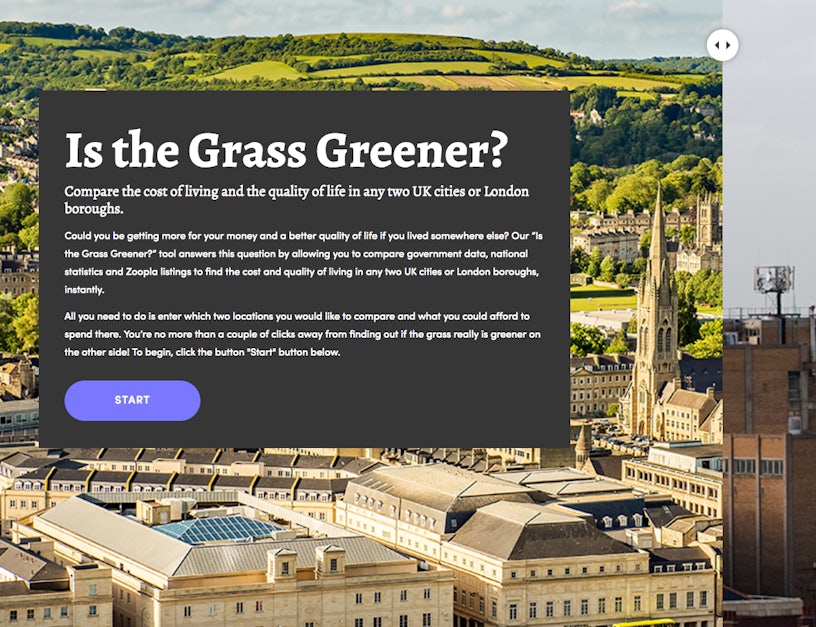
This content piece travelled alongside a survey which found that one in three 25-34-year-olds living in London will buy their first home outside of the capital. The result? National coverage in The Daily Express as well as in various property and local publications.
Co-op Insurance’s Park Smart
Launched in July, this interactive map has already gained coverage in over 65 places!
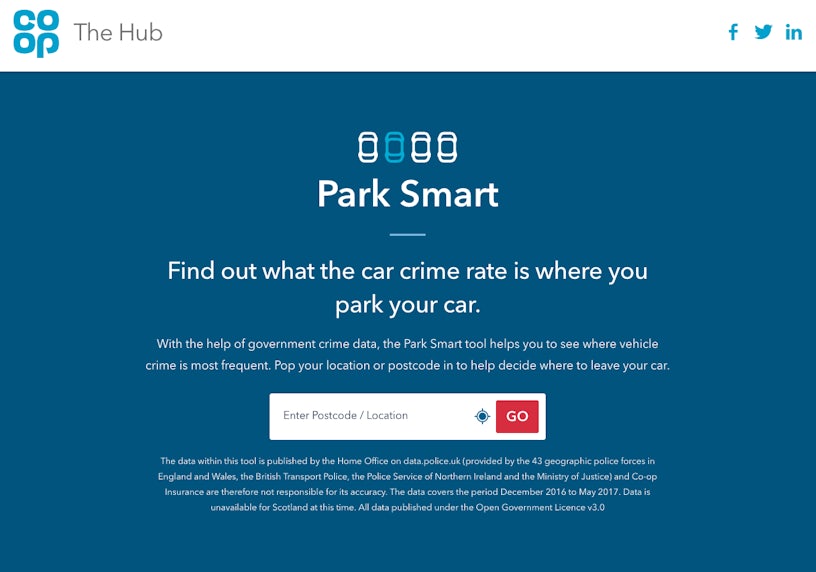
Park Smart lets users “make sensible choices as to where to park their car, based on a number of vehicle-related crimes that have taken place over the last six months using Government crime data”. Areas are colour coded red, orange or yellow to make it easy for users to identify areas of concern.
These a just a few campaigns that I’ve seen over the last few months and in many cases I’m seeing the same characteristics crop up time and time again, which I believe make them a success:
- They are designed with the user in mind – Look how simple the designs are. With just the click of a few buttons and you’ll be presented with the results. And speaking of ease, you’ll notice in each case how prominent the social media buttons are. Why’s that? Because it’s gold when people share things with their family/friends/work colleagues, and then they share and the whole thing gathers momentum. Social shares = free advertising.
- They are relevant – You might think anything can be made relevant but that’s just not the case. The Online Mortgage Advisor piece emerged just as a number of national UK housing market reports were released and Co-op’s Park Smart map was created on the back of the company finding a 20% year on year increase in car thefts across the UK. What’s NOT relevant is a map that show you where you need to move if you want to survive a nuclear attack! While this campaign gained coverage and links it wasn’t necessarily for the right reason – see this BBC article.
- They create talking points – Let’s not kid ourselves, everyone loves a good moan about house prices and everyone loves to talk about their neighbourhood – and their pets! So if you find our that your street has the highest/lowest crime rate in your area then of course you’re going to tell someone about it. These campaigns were all built on provoking some sort of emotion – happy, sad, fear, relief, outrage/shock etc. and they do it well.
- They have multiple ‘layers’ – By layers I mean different stories or angles which could be used during the outreach process. For example, the press could write a story on any element of Sainsbury’s piece – the areas where there are the most dog/cat owners, the most popular breeds in the UK, and the most popular names. With the Online Mortgage Advisor piece, a journalist could choose whether to angle their article on the survey data, or on the tool itself – by comparing different cities to each other. In terms of the Co-op piece, national journalists would be likely to take a holistic look at the whole of the UK – pointing out the best/worst areas for car crime – while the regionals would be more interested in in-depth data for the villages/towns/cities they serve.
- They’ve used other avenues to promote the campaign – As mentioned earlier, I first saw the Sainsbury’s piece as a sponsored ad on Facebook. Pay- per-click (PPC) can often work hand in hand with digital PR and is a great way of making your content travel further. Turning your content into a blog post on your site is also highly recommended, as is promoting it through your own social channels. Sounds common sense but it’s surprising how many companies forget to do this!
Do you think there are any additional elements to a successful content marketing campaign? Leave a comment and let me know below!



